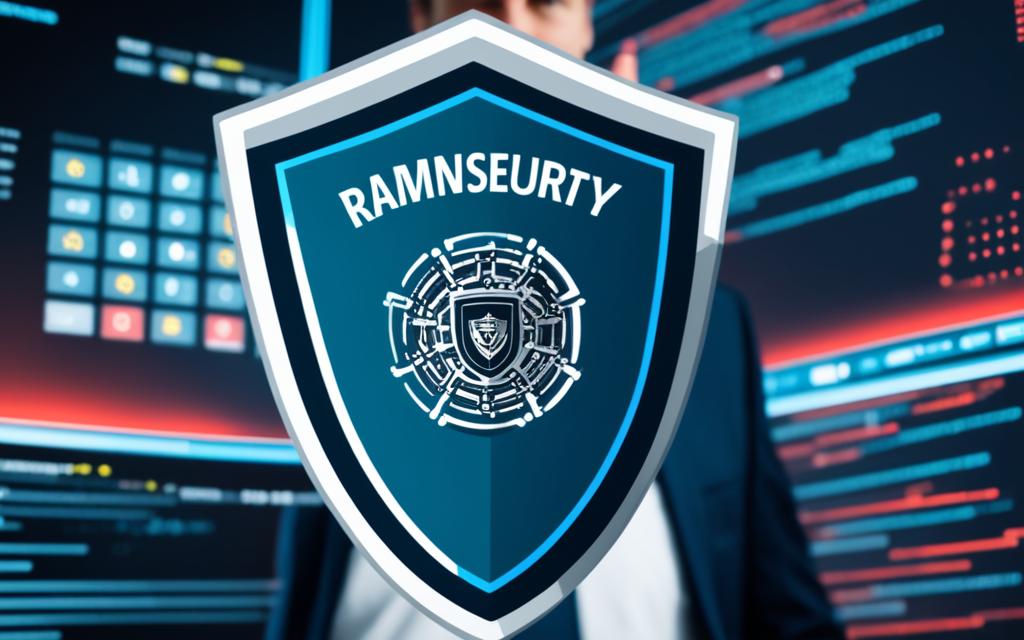Strategies for Comprehensive Ransomware Eradication
Ransomware attack response, malware removal, ransomware tactics, data breach incidents
Ransomware, a malicious form of malware, has become a pervasive threat to individuals and organizations alike. These attacks involve the encryption of files and systems, with cybercriminals demanding a ransom for their release. In recent years, the tactics of these malicious actors have evolved, with the introduction of double extortion, where they not only encrypt data but also exfiltrate it and threaten to release it unless the ransom is paid.
Such attacks can have severe consequences for businesses, disrupting operations, causing economic losses, and tarnishing reputations. As a result, organizations must implement comprehensive strategies to prevent and respond to ransomware attacks effectively. These strategies encompass various best practices, including preparation, prevention, and mitigation, and collaboration with cyber incident response organizations.
Preparation is vital in the fight against ransomware. This involves not only putting measures in place to prevent attacks but also having robust response plans ready. Organizations should establish cyber incident response teams and policies, ensuring that they have the necessary resources and expertise to handle potential ransomware incidents swiftly and effectively.
Prevention is another crucial aspect of ransomware eradication. Implementing measures such as regular backups of critical data, keeping systems and software up to date, using reliable antivirus software, and safeguarding against email phishing attacks can significantly reduce the risk of falling victim to ransomware attacks.
In the unfortunate event of a ransomware attack or data breach incident, organizations must have a well-defined response plan to minimize the impact and facilitate a swift recovery. This includes isolating infected systems to prevent further spread, determining the particular ransomware variant to aid in decryption efforts, and promptly notifying relevant parties, including law enforcement and affected individuals. Effective communications plans are essential to ensure a coordinated response and maintain transparency with stakeholders.
Overall, combatting ransomware requires a multi-faceted approach that encompasses prevention, response, and collaboration. By adhering to best practices and staying vigilant, individuals and organizations can protect their data and mitigate the potentially devastating consequences of ransomware attacks.
Ransomware and Data Extortion Prevention Best Practices
Organizations should follow best practices to reduce the impact and likelihood of ransomware incidents and data extortion. By implementing these measures, businesses can safeguard their critical data and protect against the damaging consequences of cyber attacks.
- Create Regular Backups: Maintaining offline backups of critical data is crucial to mitigate the impact of ransomware attacks. By regularly backing up data to external storage or secure cloud servers, organizations can ensure the availability and integrity of their information. Regularly test the backups to verify their effectiveness.
- Implement Robust Cyber Incident Response Plan: Organizations should have a well-defined and regularly exercised cyber incident response plan (IRP) in place. The IRP should include response and notification procedures tailored specifically for ransomware incidents. It is important to ensure that data breach notification procedures adhere to applicable state laws and regulations.
- Conduct Employee Training: Educate employees about the risks associated with ransomware attacks and teach them how to identify potential threats such as phishing emails and malicious attachments. By encouraging a culture of cybersecurity awareness, organizations can empower their employees to play an active role in preventing data extortion.
A proactive approach to ransomware prevention is crucial for maintaining data security. By implementing these best practices, organizations can reduce the likelihood of falling victim to ransomware attacks and better protect their valuable data and assets.
“Investing in preventive measures and a robust cyber incident response plan is key to defending against ransomware attacks and minimizing their impact on organizations.” – Cybersecurity Expert
Real-Life Example: Cyber Attack on XYZ Inc.
In June 2021, XYZ Inc., a leading global organization, fell prey to a sophisticated ransomware attack, highlighting the importance of robust prevention strategies. As a result of inadequate backups and a lack of a comprehensive cyber incident response plan, XYZ Inc. experienced significant operational disruptions and reputational damage. This incident serves as a wake-up call for organizations to prioritize ransomware prevention and implement best practices to protect their sensitive data from extortion.
Don’t let your business become the next victim. Take proactive steps now to strengthen your defenses against ransomware and safeguard your critical data.
| Best Practices | Benefits |
|---|---|
| Maintain regular backups | Ensures data availability and integrity |
| Implement a robust cyber incident response plan | Enables efficient and coordinated response to ransomware incidents |
| Conduct employee training | Empowers employees to identify and prevent ransomware attacks |
Ransomware and Data Extortion Response Checklist
In the event of a ransomware attack or data extortion incident, organizations must have a well-defined response checklist in place to effectively mitigate the impact and ensure a prompt recovery. It is crucial to follow a step-by-step approach to minimize damage and safeguard valuable resources. The following checklist outlines key actions that need to be taken:
- Isolate infected systems: Immediately disconnect all compromised devices from the network to prevent the further spread of ransomware.
- Identify ransomware variant: Determine the specific type of ransomware used in the attack to assess the level of threat and potential decryption options.
- Engage incident response team: Contact the internal incident response team or cybersecurity experts to assist in investigating and resolving the incident effectively.
- Gather evidence: Preserve any potential evidence related to the ransomware attack, which may include log files, system snapshots, or malware samples.
- Assess impact: Evaluate the extent of the attack, including encrypted files or inaccessible systems, to prioritize recovery efforts.
- Notify law enforcement: Report the ransomware attack to the appropriate law enforcement agencies, providing them with any available evidence to aid in their investigations.
- Notify affected individuals: Inform all affected parties, such as employees, customers, and partners, about the incident and any potential risks to their personal information.
- Activate incident response plan: Follow the incident response plan (IRP) developed by the organization to guide the response and recovery process effectively.
- Restore from backups: Use clean backups to restore encrypted files and affected systems to their pre-attack state.
- Implement enhanced security measures: Enhance security controls and measures to prevent future attacks, such as patching vulnerabilities, strengthening access controls, and conducting regular security awareness training.
- Conduct post-incident analysis: Review the incident response process and identify areas for improvement to enhance future incident response capabilities.
By following this comprehensive checklist, organizations can ensure a coordinated and efficient response to ransomware attacks and data extortion incidents, minimizing the impact on business operations and mitigating potential damages.
| Actions | Key Steps |
|---|---|
| Isolate infected systems | Disconnect compromised devices from the network. |
| Identify ransomware variant | Determine the specific type of ransomware used in the attack. |
| Engage incident response team | Contact internal or external experts for assistance. |
| Gather evidence | Preserve potential evidence for investigation. |
| Assess impact | Evaluate the extent of the attack and prioritize recovery efforts. |
| Notify law enforcement | Report the attack to appropriate authorities. |
| Notify affected individuals | Inform employees, customers, and partners about the incident. |
| Activate incident response plan | Follow the organization’s IRP to guide the response process. |
| Restore from backups | Use clean backups to restore encrypted files and systems. |
| Implement enhanced security measures | Enhance security controls and conduct regular training. |
| Conduct post-incident analysis | Review the incident response process for improvements. |
Avoiding Mistakes in Ransomware and Data Extortion Response
“A well-prepared incident response plan and effective communication strategy are critical components for successfully responding to and mitigating the impact of ransomware and data extortion incidents.” Ryan Thompson, Cybersecurity Expert.
By adhering to this comprehensive checklist and collaborating with incident response professionals, organizations can minimize the damage caused by ransomware attacks and data extortion incidents. A robust incident response plan (IRP) and communications plan play a vital role in ensuring a coordinated, efficient, and effective response.
Ransomware Defense Strategies
To defend against ransomware attacks, individuals and organizations should implement effective defense strategies. These strategies should include:
- Regularly backing up data to external storage or cloud servers to ensure data can be restored in case of an attack. Backup data is crucial for recovery and minimizing the impact of ransomware.
- Keeping all systems and software updated to patch any vulnerabilities that can be exploited by ransomware. Software updates often include security patches that address known vulnerabilities.
- Installing antivirus software and firewalls to provide a strong line of defense against ransomware. Antivirus software can detect and remove malicious programs, while firewalls can block suspicious network traffic.
- Implementing network segmentation to isolate critical systems and data from the rest of the network. This helps prevent the spread of ransomware across the network and limits its impact.
- Protecting against email phishing attacks by educating users about the signs of phishing emails and implementing email filtering solutions to block malicious emails.
Additionally, organizations can enhance ransomware defense by:
- Implementing application whitelisting to allow only approved and trusted applications to run. This helps prevent the execution of malicious programs, including ransomware.
- Ensuring endpoint security by implementing security measures on individual devices, such as encryption, multi-factor authentication, and strong password policies.
- Limiting user access privileges to restrict users’ permissions based on their roles and responsibilities. By granting the least privileges necessary, organizations can minimize the impact of a compromised user account.
By following these ransomware defense strategies, individuals and organizations can significantly reduce the risk of falling victim to ransomware attacks and protect their valuable data.
Note: The image above illustrates the importance of ransomware defense strategies in safeguarding data from malicious attacks.
Conclusion
Ransomware attacks pose a significant threat to individuals and organisations alike. To combat this menace, it is crucial to implement comprehensive strategies that focus on eradication, prevention, and effective response. By following cybersecurity best practices and collaborating with cyber incident response organisations, individuals and organisations can protect their valuable data and minimise the impact of ransomware incidents.
Proactivity is key in the fight against ransomware. Staying updated on evolving tactics and employing robust cybersecurity measures can help stay one step ahead of attackers. Regularly backing up critical data, maintaining up-to-date software and antivirus protection, and implementing network segmentation are some of the key practices that can contribute to ransomware eradication.
In case of a ransomware attack, having a well-defined incident response plan can make all the difference. Promptly isolating infected systems, identifying the ransomware variant, and notifying relevant parties such as law enforcement and affected individuals are vital steps towards quick recovery. Effective communication and coordination are crucial components of response strategies to mitigate the impact of such incidents.
With the persistent threat of ransomware attacks, it is imperative for individuals and organisations to remain vigilant and proactive. By implementing comprehensive cybersecurity practices, collaborating with experts, and continuously refining prevention and response plans, we can effectively protect our data and combat the ever-evolving tactics of ransomware.












